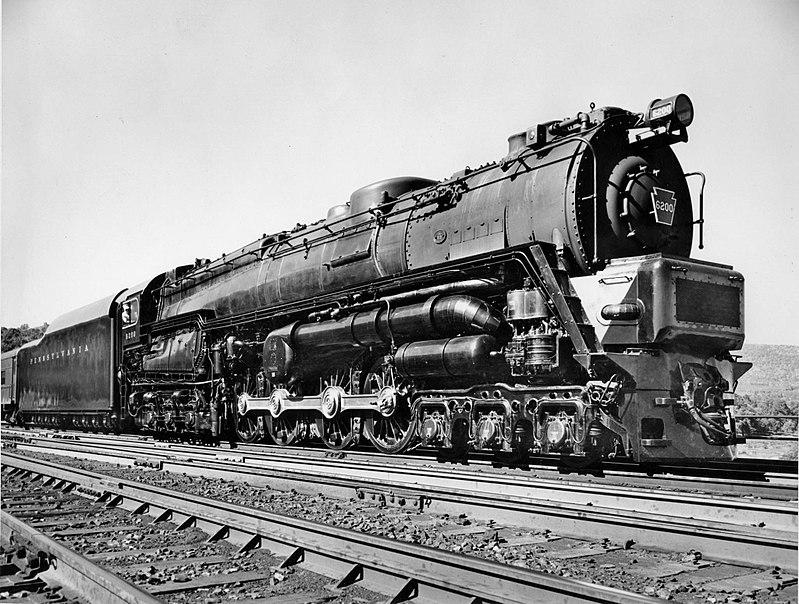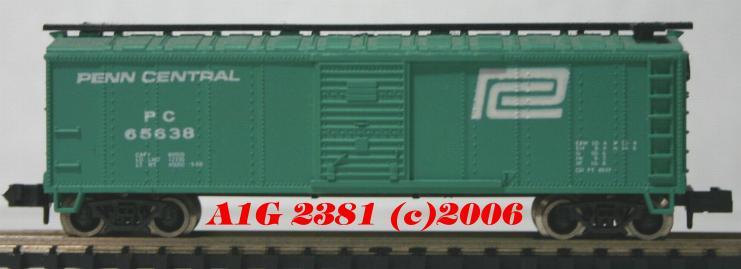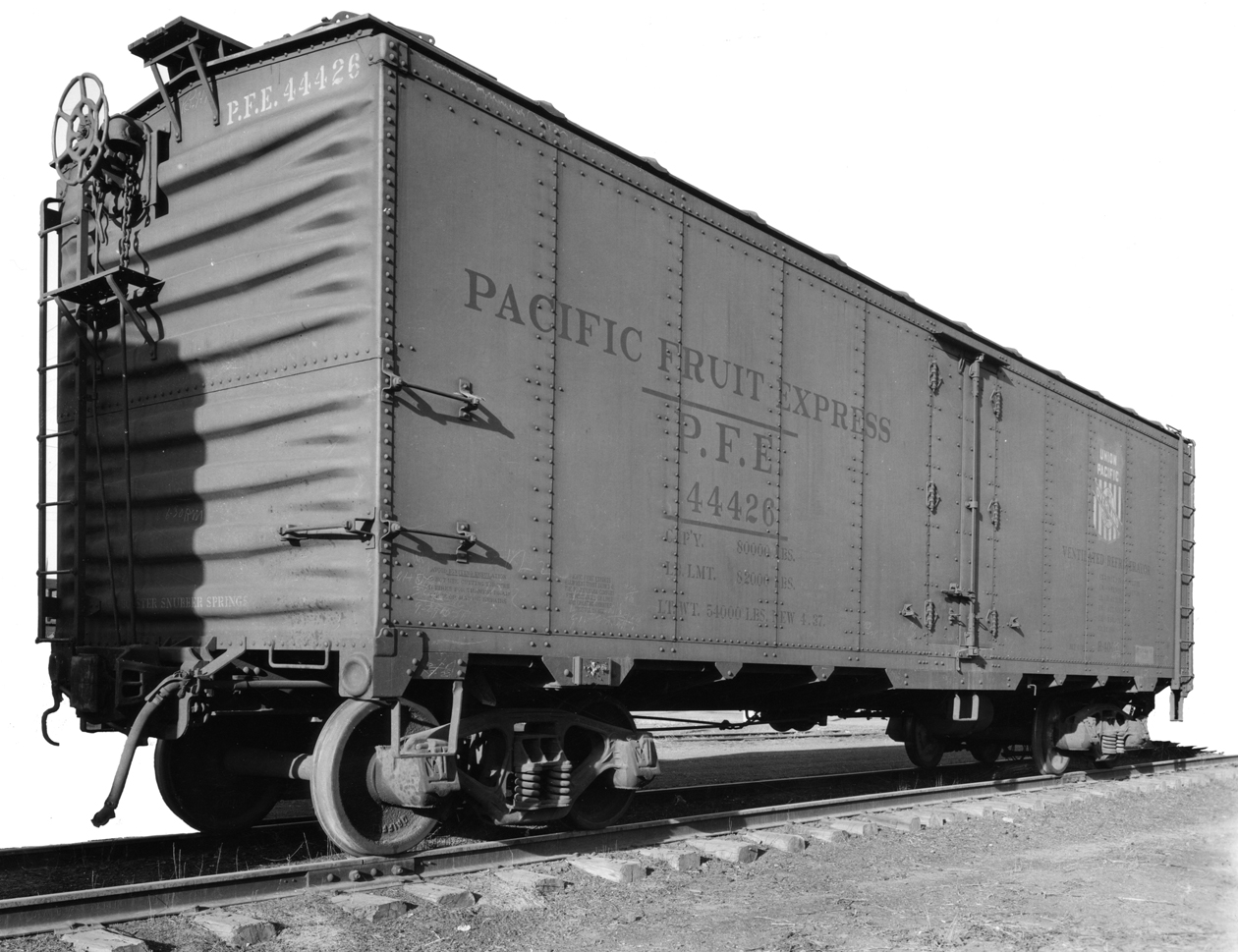History: The Pennsylvania Railroad's class S2 was a steam turbine locomotive designed and built in a collaborative effort by Baldwin Locomotive Works and Westinghouse Electric & Manufacturing Company, as an attempt to prolong the dominance of the steam locomotive by adapting technology that had been widely accepted in the marine industry. One was built, #6200, delivered in September 1944. The S2 was the sole example of the 6-8-6 wheel arrangement in the Whyte notation, with a six-wheel leading truck, eight driving wheels, and a six-wheel trailing truck. The S2 used a direct-drive steam turbine provided by the Westinghouse Electric & Manufacturing Company, geared to the center pair of axles with the outer two axles connected by side rods; the fixed gear ratio was 18.5:1. Such design was to prevent energy loss and S2 achieved a mechanical efficiency of 97% which means only 3% of steam energy was lost within the propulsion equipment. The disadvantage of direct-drive steam turbine was that the turbine could not operate at optimal speeds over the locomotive's entire speed range. The S2 was the largest, heaviest and fastest direct-drive turbine locomotive design ever built.
Railroad/Company: The Baldwin Locomotive Works was an American builder of railroad locomotives. It was originally located in Philadelphia, and later moved to nearby Eddystone, Pennsylvania. Although the company was very successful as the largest producer of steam locomotives, its transition to the production of diesels was far less so. Later, when the early demand for diesel locomotives to replace steam tapered off, Baldwin could not compete in the marketplace. It stopped producing locomotives in 1956 and went out of business in 1972, having produced over 70,000 locomotives, the vast majority powered by steam.
In 1956, after 125 years of continuous locomotive production, Baldwin closed most of its Eddystone plant and ceased producing locomotives. The company instead concentrated on production of heavy construction equipment. More than 70,500 locomotives had been built when production ended. In 1965 Baldwin became a wholly owned subsidiary of Armour and Company. Greyhound Corporation purchased Armour and Company in 1970, and in 1972 Greyhound closed Baldwin-Lima-Hamilton for good.
From Wikipedia
In 1956, after 125 years of continuous locomotive production, Baldwin closed most of its Eddystone plant and ceased producing locomotives. The company instead concentrated on production of heavy construction equipment. More than 70,500 locomotives had been built when production ended. In 1965 Baldwin became a wholly owned subsidiary of Armour and Company. Greyhound Corporation purchased Armour and Company in 1970, and in 1972 Greyhound closed Baldwin-Lima-Hamilton for good.
From Wikipedia
Item created by: gdm on 2020-12-17 07:08:29
If you see errors or missing data in this entry, please feel free to log in and edit it. Anyone with a Gmail account can log in instantly.
If you see errors or missing data in this entry, please feel free to log in and edit it. Anyone with a Gmail account can log in instantly.








